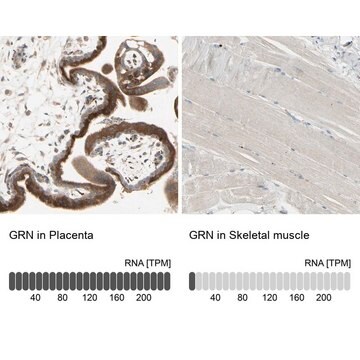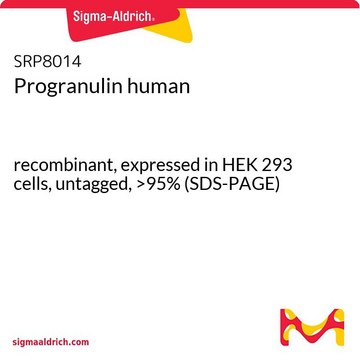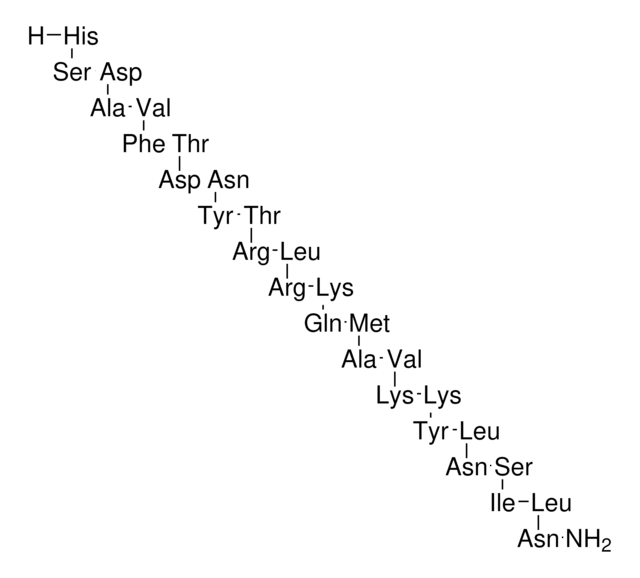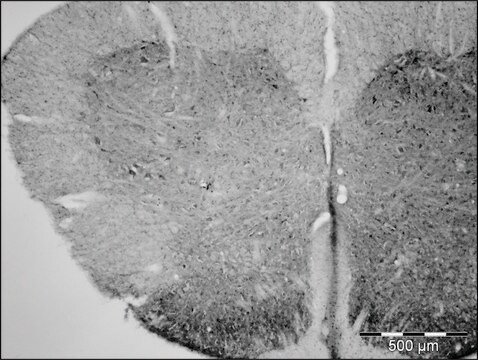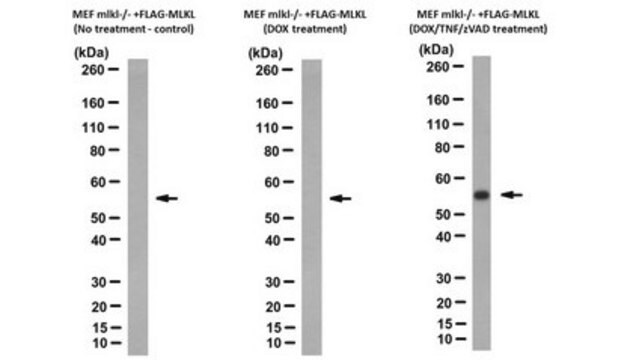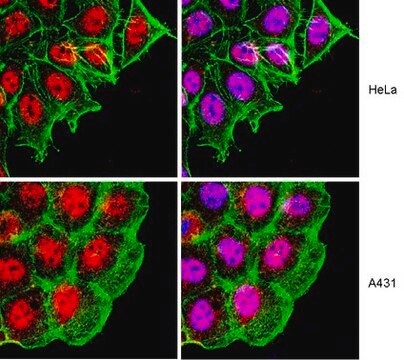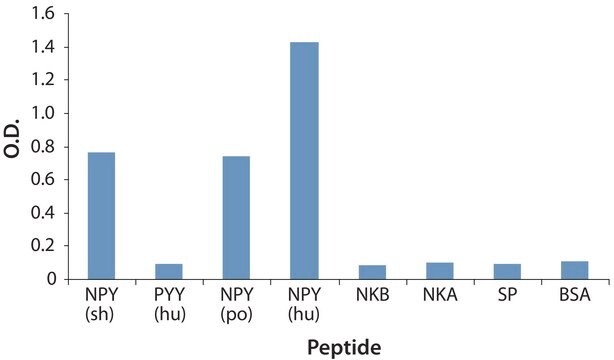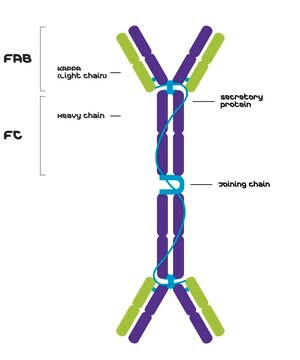MABN1795
Anti-Progranulin/GRN Antibody, clone 8H10
clone 8H10, from rat
Synonim(y):
Granulins, Progranulin/GRN
About This Item
Polecane produkty
pochodzenie biologiczne
rat
Poziom jakości
forma przeciwciała
purified immunoglobulin
rodzaj przeciwciała
primary antibodies
klon
8H10, monoclonal
reaktywność gatunkowa
mouse
metody
immunohistochemistry: suitable
western blot: suitable
izotyp
IgG2cκ
numer dostępu NCBI
numer dostępu UniProt
Warunki transportu
wet ice
docelowa modyfikacja potranslacyjna
unmodified
informacje o genach
mouse ... Grn (14824)
Opis ogólny
Specyficzność
Immunogen
Zastosowanie
Neuroscience
Developmental Signaling
Immunohistochemistry Analysis: A representative lot detected elevated progranulin expression in the cortex, hippocampus, and thalamus regions of Ctsd-/- mice when compared with wild-type mice using frozen brain sections (Gotzl, J.K., et al (2014). Acta Neuropathol.127(6):845-860).
Jakość
Western Blotting Analysis: 2.0 µg/mL of this antibody detected Progranulin/GRN in 10 µg of mouse uterus tissue lysate.
Opis wartości docelowych
Postać fizyczna
Przechowywanie i stabilność
Inne uwagi
Oświadczenie o zrzeczeniu się odpowiedzialności
Nie możesz znaleźć właściwego produktu?
Wypróbuj nasz Narzędzie selektora produktów.
Kod klasy składowania
12 - Non Combustible Liquids
Klasa zagrożenia wodnego (WGK)
WGK 1
Temperatura zapłonu (°F)
Not applicable
Temperatura zapłonu (°C)
Not applicable
Certyfikaty analizy (CoA)
Poszukaj Certyfikaty analizy (CoA), wpisując numer partii/serii produktów. Numery serii i partii można znaleźć na etykiecie produktu po słowach „seria” lub „partia”.
Masz już ten produkt?
Dokumenty związane z niedawno zakupionymi produktami zostały zamieszczone w Bibliotece dokumentów.
Nasz zespół naukowców ma doświadczenie we wszystkich obszarach badań, w tym w naukach przyrodniczych, materiałoznawstwie, syntezie chemicznej, chromatografii, analityce i wielu innych dziedzinach.
Skontaktuj się z zespołem ds. pomocy technicznej